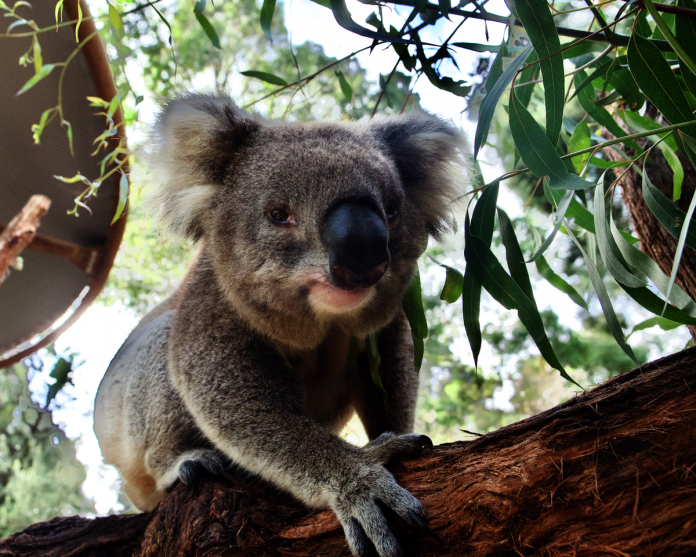
Chantelle Bozicevic
A new app launched by the Queensland government aims to enlist the public’s help in tracking koala populations across the state. The QWildlife Koala Sighting App allows citizens to report koala sightings, providing valuable location and population data. However local conservation group, Koala Action Gympie Region, is urging residents to stick with the existing local reporting system, Wildwatch Gympie.
Environment Minister Leanne Linard and Member for Springwood Mick de Brenni officially unveiled the QWildlife Koala Sighting App during a visit to the Daisy Hill Koala Centre. The app, inspired by the success of the QWildlife Crocodile Sighting App, developed by the Queensland Parks and Wildlife Service, aims to improve the management of koalas by gathering accurate data from citizen scientists.
When encountering a koala in national parks, state forests, bushlands, or urban areas, users of the app can easily upload details and accompanying photos, providing insights into koala distribution and habitat usage. The information collected through the app will contribute to crucial research, conservation efforts, and management actions related to these iconic marsupials.
Accompanying the app launch, Minister Linard also announced $520,000 in grants for six projects supporting long-term koala conservation efforts in South East Queensland. The projects encompass various initiatives such as koala population monitoring, artificial intelligence implementation for road safety monitoring, thermal drone surveys, and the preservation of habitat connectivity.
While the QWildlife Koala Sighting App has been received with enthusiasm by many, Michelle Daly of Koala Action Gympie Region is calling on Gympie residents to refrain from using the government’s app and continue utilising the established Wildwatch Gympie system instead.
Daly explains, “we need locals to use the local reporting system, not that new one. That app may be useful in areas that do not have a local koala reporting system, but our region has Wildwatch Gympie.” She emphasises the importance of supporting the existing initiative and urges residents of Gympie to report their koala sightings through the well-established platform.
Reflecting on the origins of the local reporting system, Daly highlights its instrumental role in gathering essential data on the Gympie region’s koala population. “In 2015 when our group started, there was little or no data on our local koala population,” she explains. “So we set about engaging the community in gathering and reporting sightings to identify where koalas were persisting in the region and monitoring their progress amidst various impacts – all crucial information for conservation efforts.”
Daly credits the Council environment team for the creation of Wildwatch Gympie, an online service that facilitates the sharing of sightings of threatened and priority native animals in the region. Furthermore, the platform allows residents to report instances of native animal vehicle strikes, providing valuable insights for conservation efforts and contributing to the State’s “Wildnet” wildlife database.
The data collected through Wildwatch Gympie has proven to be a valuable asset, aiding various koala conservation initiatives both locally and statewide. Daly emphasies the collaborative nature of the endeavor, with the information gathered by locals being utilised in multiple ways to support ongoing conservation efforts.
As the debate over which app to use continues, it remains to be seen how Gympie residents will choose to contribute to the tracking of their local koala population. While the Queensland government’s QWildlife Koala Sighting App offers an accessible and streamlined approach, the established Wildwatch Gympie system holds its ground, showcasing the power of community engagement and local initiatives in preserving our precious wildlife.
